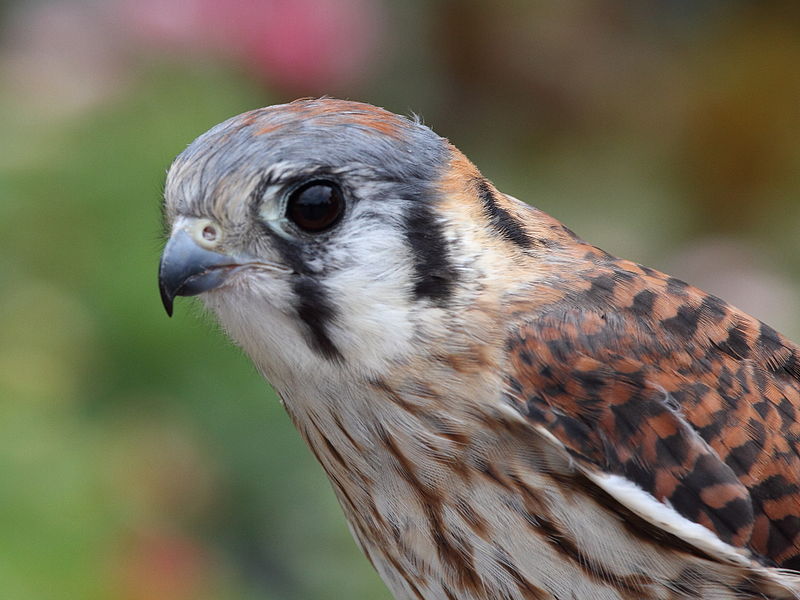
The population of North America’s smallest falcons, the American kestrel, is declining in the northeast, and were added to the New Jersey list of threatened species in 2012. The drop is linked to ever expanding development throughout the state.
“Loss of grasslands due to development and a lack of suitable nest cavities are widely agreed to be among the reasons for their declining numbers,” explains FoHVOS Land Steward and licensed bird bander Tyler Christensen, “Humans have been responsible for major changes to the landscape in New Jersey, and this has resulted in hardship for many of our state’s native plant and animal species. In order to reduce our environmental footprint, the onus is on us to protect these species that we have affected. To do this we must at times intervene and provide them with what we’ve historically damaged or taken away.”
Fortunately, FoHVOS Community Conservation has enlisted help from an amazing cross section of volunteers to bring kestrels back to Hopewell Valley.
The New Jersey Fish & Wildlife Endangered & Nongame Species Program provided a Conserve Wildlife Matching Grant to cover materials for 50 kestrel nesting boxes. The boxes are needed since kestrels do not construct their own nests; historically they have nested in tree cavities created by other birds like woodpeckers or by decomposition. Today kestrels most often nest in buildings and in artificial nest boxes.
Throughout the month of March, volunteers of all ages heeded the call to build kestrel homes. The youngest volunteers from the Painted Oak Nature school came out with their families on a Saturday morning and built nine nesting boxes. Cub Scout troop 1776 and Hopewell Valley Girl Scouts also joined subsequent efforts.
The participation rate and response from local schools was overwhelming. “When we announced that we were hosting a gathering to build kestrel boxes at the school, registration filled up almost immediately,” said Courtney Peters-Manning, Cambridge School Director of Finance, “It’s a great family activity and children naturally feel good about providing a home for the kestrels.”
Calvary Baptist Church in Hopewell also hosted two Sunday sessions for families. Some folks came out to build kestrel boxes. Others were more interested in hearing the conservation presentations from FoHVOS land stewards Tyler Christensen and Beth Craighead. Everyone felt closer to nature.
In addition to family weekend kestrel events, FoHVOS provided age-appropriate programs in the Valley’s public and private schools. Marisa Ferrari, Pennington School’s 12th grade ecology teacher was thrilled her students could apply their conservation knowledge and FoHVOS was excited to help. Tyler Christensen added, “I think doing this with a 12th grade ecology class has especially great potential to impart something positive and lasting on the participants; they have some ecology background knowledge to contextualize what they’re building and helping with, and they may be looking for a cool direction to take their education and careers!”
Once the boxes were built, volunteers mount the boxes about 10 feet up off the ground. A team from Bloomberg came out the last week of March to begin installation. Bloomberg staff have helped FoHVOS with land restorations for years but this is the first time they have worked on a bird conservation project.
Volunteers are still needed to mount and regularly check additional boxes. In the past, a monitor needed to climb a ladder to see inside the nest, now we just look using a camera on stick. Think of it as bird selfies.
Finally, we need private property owners who are willing to host kestrel nest boxes; kestrels generally require large open fields (at least one acre, but the bigger the better) with minimal human activity during the nesting season (April – July).
FoHVOS’s existing kestrel conservation program includes a handful of boxes that we maintain and monitor. This project is a major expansion and it’s been pretty remarkable to see all these different groups step up to join a FoHVOS Community Conservation initiative. Sign up to join us for box assembly, installation, monitoring, or volunteer to host a box.
Township committee members came out to build bird boxes with the public. Hopewell Township Mayor Kristin McLaughlin shared, “Hopewell Valley has shown that we can accomplish great things when we all work together and we are thrilled to do our part and hope this project results in increases for the kestrel population.”
An excerpt of this article appears in April’s Hopewell Valley Neighbors magazine.
Click HERE to DONATE to FOHVOS!

